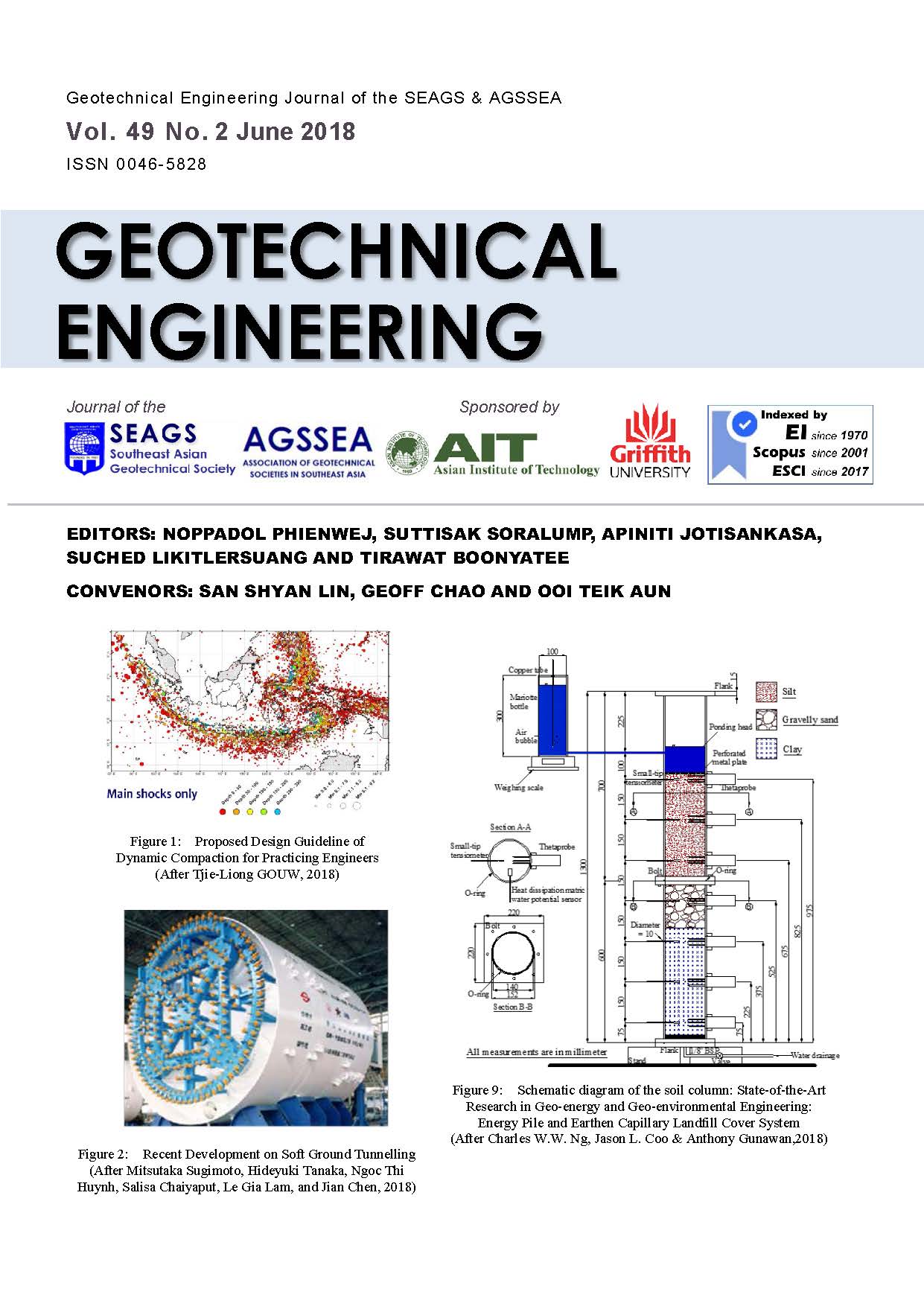Proposed Design Guideline of Dynamic Compaction for Practicing Engineers
Main Article Content
Abstract
During an earthquake, saturated fine sands tends to lose its bearing capacity due to the earthquake induced and accumulated excess pore water pressure. The phenomenon, known as liquefaction, is one of the earthquake hazards that need to be mitigated in an earthquake prone area such as the archipelagos of Indonesia. The occurrence of an earthquake cannot be prevented and, with the present knowledge, is difficult – if not impossible – to predict. However, liquefaction potential can be mitigated by carrying out proper ground improvement methods. The most common ground improvement schemes that have been widely implemented in mitigating liquefaction potential of saturated fine sands in Indonesia are dynamic compaction and vibro-compaction. However, many practicing engineers are still not familiar with the methods. This paper presents the design, execution, and evaluation methods of dynamic compaction. Two case histories on real projects are also presented as examples.
Article Details

This work is licensed under a Creative Commons Attribution-NonCommercial-NoDerivatives 4.0 International License.
Copyright © 2019 Association of Geotechnical Societies in Southeast Asia (AGSSEA) - Southeast Asian Geotechnical Society (SEAGS).


